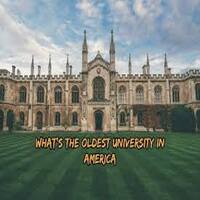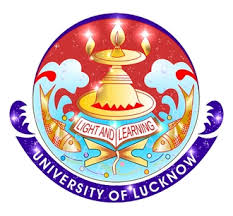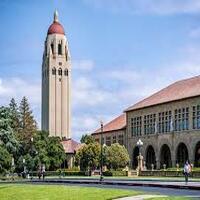1. Introduction: America’s Oldest Seat of Learning
America’s Oldest Seat of Learning Founded in 1636 by the Massachusetts Bay Colony, Harvard University holds the distinction of being the oldest institution of higher education in the United States (en.wikipedia.org). Named after its first major benefactor, Puritan minister John Harvard, the university began with a donation of 400 books and half of his estate (en.wikipedia.org). Over nearly four centuries, Harvard has evolved from a modest colonial college into a global intellectual powerhouse, driving innovation, leadership, and cultural impact—from fields as diverse as politics, science, arts, and business.
2. Historic Roots: From Colony to Ivy League
2.1 Colonial Beginnings (1636–1776)
In its early years, Harvard operated under a strict religious and classical curriculum tailored to clergy training . In 1655, the Indian College—today Matthews Hall—was built to honor the charter’s directive to educate Indigenous youth (visitour.io). Harvard’s role during the Revolutionary period was noteworthy: Harvard Hall was rebuilt after a 1764 fire destroyed 5,000 books (harvard.edu). During the Siege of Boston in 1775, students housed soldiers, and eight alumni signed the Declaration of Independence (harvard.edu).
2.2 19th Century – The Birth of a Modern University
President Charles W. Eliot (1869–1909) transformed Harvard from a sectarian college into a modern research university. He introduced the elective system, expanded professional schools, and reorganized academic structures inspired by German models (mtworek.scholars.harvard.edu). The establishment of Harvard Law School (1817), Harvard Divinity School (1816), and Medical School (1782) exemplify this shift (americaeducators.com).
2.3 20th Century to Present
Harvard embraced coeducation through its 1999 merger with Radcliffe College, with women graduating alongside men since 1960 (britannica.com). Presidents like James Conant advanced merit-based admissions, liberalizing selection and opening Harvard up beyond elite circles (mtworek.scholars.harvard.edu). Today, the university is overseen by President Alan Garber, serving a student body of over 21,000 and a massive endowment approaching $53 billion (en.wikipedia.org).
3. Campus & Architecture: Tradition Meets Innovation
3.1 Harvard Yard: Campus Heartbeat
Harvard Yard is a 22–25‑acre pastoral green space surrounded by red‑brick Georgian and Federal buildings—such as Massachusetts Hall, University Hall, and Holden Chapel (en.wikipedia.org). Its perimeter, marked by wrought-iron fencing and 27 gates, signals both openness and separation (en.wikipedia.org). The Yard originated as a pasture in the Colonial era and was landscaped in the early 19th century with elm groves and walking paths (tclf.org).
3.2 Iconic Structures
- Massachusetts Hall (1718–20): Harvard’s oldest surviving building and second-oldest academic hall in America (en.wikipedia.org).
- University Hall (1813–15): A Charles Bulfinch–designed granite landmark, originally containing a library, chapel, and dining hall (en.wikipedia.org).
- Memorial Hall (1870–77): A neo-Gothic tribute to Civil War alumni, housing Sanders Theatre and Annenberg Hall (en.wikipedia.org).
- Widener Library: Named for a Titanic victim, this central library anchors Harvard’s renowned 79‑library system—one of the world’s largest (educba.com).
3.3 Beyond the Yard
Harvard comprises 209 acres in Cambridge, including residential houses south of the Yard and the Quad (Radcliffe’s former campus) northwest (ellacyfoundation.org). Crucial facilities—including the Business School, Harvard Stadium, and the burgeoning Allston campus—lie across the Charles River (ellacyfoundation.org).
4. Academic Offering: Breadth, Depth, Brilliance
4.1 Harvard College & General Education
Undergraduates follow a liberal arts model, choosing from over 50 concentrations, from Economics to Computer Science and Government (americaeducators.com). The university blends foundational knowledge with elective freedom—an arrangement pioneered by Eliot and expanded under Conant (encyclopedia.com).
4.2 World-Class Graduate & Professional Schools
Harvard’s academic structure includes ten faculties and the Radcliffe Institute for Advanced Study (plexuss.com), among them:
- Harvard Graduate School of Education
- Harvard Business School, renowned for its case-study pedagogy
- Harvard Law School, the oldest continually operating law school in the US (americaeducators.com)
- Harvard Medical School, a front-runner in medical education since 1782 (americaeducators.com)
- Other schools: public health, design, dentistry, government, divinity.
4.3 Faculty & Research
Harvard’s faculty includes Nobel laureates, Pulitzer winners, and globally influential scholars (britannica.com, educba.com). Across disciplines, research tackles pressing issues: climate change, public health, AI and tech, inequality, and more. The Harvard Library and associated museums (Peabody, Fogg, etc.) amplify scholarly reach .
5. Student Life & Community Culture
5.1 Residential System
Freshmen reside in Yard dorms, including Massachusetts Hall. Sophomores through seniors live in 12 residential Houses—modeled on Oxbridge—that offer privacy, meals, and community (ellacyfoundation.org).
5.2 Traditions & Campus Spirit
- Primal Scream: Students streak across the Yard before finals in a cathartic midnight tradition .
- Harvard–Yale Game: The iconic annual rivalry, fueling centuries of athletic and alumni fervor .
- “Three Lies” Statue: The famed John Harvard statue is famous for its misleading plaque—its lore part of campus folklore .
5.3 Clubs, Activities, & Activism
With over 450 student organizations , Harvard offers avenues from entrepreneurship to a cappella to political advocacy. Protests—like those over Palestine/Israel—have prompted intense debate on inclusivity, resulting in reports addressing antisemitism and Islamophobia (thetimes.co.uk). Harvard has pledged reforms, mandatory training, and policy overhaul to address campus tensions (thetimes.co.uk).
6. Selectivity, Prestige & Outcomes
6.1 Admissions Excellence
Admission is highly selective; while exact figures fluctuate, acceptance rates hover from 3% to 5%, historically among the lowest in the Ivy League . SAT averages exceed 1500, ACT scores cluster in the 34–36 range.
6.2 Rankings & Reputation
Harvard consistently ranks among the world’s top universities—routinely in the top 5 globally across multiple systems. Its undergraduate, law, business, medical, education, and science programs are perennially elite.
6.3 Alumni & Influence
Distinguished alumni include U.S. presidents (Kennedy, Obama, John Adams, John Quincy Adams), Supreme Court justices, Nobel laureates, and cultural figures like Mark Zuckerberg, Natalie Portman, and Malala Yousafzai . Over 150 Nobel laureates are Harvard alumni or faculty, and more than 335 Rhodes Scholars studied here (plexuss.com).
6.4 Career Success
Graduates enter competitive arenas—Wall Street, academia, government, media—with high placement rates and median salaries often exceeding six figures. The Harvard name unlocks global opportunity.
7. Challenges & Reckonings
7.1 Historical Legacy of Slavery
A recent investigation uncovered Harvard’s ties to slavery: more than 900 enslaved individuals connected to associates and nearly 500 living descendants identified—far above the previously acknowledged 70 (theguardian.com). The researcher behind this effort was reportedly dismissed amid institutional pressure . Harvard’s 2022 legacy of slavery report and a $100 million reparations commitment aim to address these truths (visitour.io).
7.2 Campus Division & Equity
Following heightened tensions since October 2023, Harvard commissioned reports on antisemitism and Islamophobia, which revealed “searing” experiences and fear of expression (thetimes.co.uk). The university has responded with training, curricular changes, and new safeguarding measures.
7.3 Inclusivity and Change
Efforts to rename buildings tied to slavery or colonialism—such as Winthrop House—reflect student-led reform (teenvogue.com). Such initiatives underscore evolving efforts to shape Harvard’s identity for today’s values.
8. The Harvard Experience: What Sets It Apart
- Blend of Tradition & Innovation: Harvard fosters deep academic inquiry in centuries-old spaces alongside cutting-edge labs, like those at Allston and across the River Houses (educba.com).
- Global Perspective: From Indigenous campus acknowledgments to the Global Health Institute, Harvard aims to be both local and internationally resonant .
- Intellectual Cross-Pollination: With flexible curriculum, robust graduate schools, research opportunities, and mentorship, interdisciplinary learning thrives .
- Societal Impact: Harvard’s influence extends through leaders in public policy, science, and culture, and through research addressing climate, inequality, and human health.
9. Conclusion: Harvard’s Enduring Legacy & Moving Forward
Harvard University remains a beacon—symbolizing academic excellence, historical depth, and societal ambition. It carries centuries of contributions—preserving Colonial-era architecture like Massachusetts Hall; shaping new knowledge in labs, libraries, and classrooms; and nurturing civic-minded leaders and Nobel laureates.
Yet Harvard faces real challenges—reckoning with slavery’s legacy, addressing inclusion and free speech tensions, and aligning tradition with contemporary values. Through robust self-examination—on reparations, antisemitism/Islamophobia, and denaming efforts—the institution works to model transparency and growth.
For prospective scholars, researchers, policymakers, and artists, Harvard offers more than credentials—it offers an environment of intellectual rigor, opportunity, global influence, and a chance to shape a future while learning from the past. As Harvard enters its fourth century today, its ambition is clear: to remain steadfast in Veritas — truth—while forging paths for a more equitable tomorrow.
Key Highlights at a Glance
| Feature | Harvard University Highlights |
|---|---|
| Founded | 1636 (colonial era) |
| Campus | 209 acres; core Campus in Cambridge; Allston across Charles River (harvard.edu, ellacyfoundation.org) |
| Student Body | ~21,278 (incl. 7,110 undergrad) |
| Endowment | ≈ $53.2 billion |
| Library System | 79 libraries, ~18+ million volumes |
| Acceptance Rate | ~3–5% |
| Alumni Distinction | 8 US Presidents, 150 Nobel laureates, 335 Rhodes Scholars |
| Signature Traditions | Primal Scream, Harvard–Yale, Three Lies, House System, residential experiences |
| Major Challenges | Legacy of slavery, campus division, renaming of buildings |
Who Should Consider Harvard?
- Students seeking rigorous interdisciplinary education in a historic yet dynamic setting.
- Scholars drawn to research, innovation, and civic engagement across scales—from local community to global policy.
- Individuals who value a vibrant tradition‑rooted culture while advocating for systemic change.
- Leaders aiming to shape global discourse in fields ranging from ethics to AI, climate, politics, and public health.




